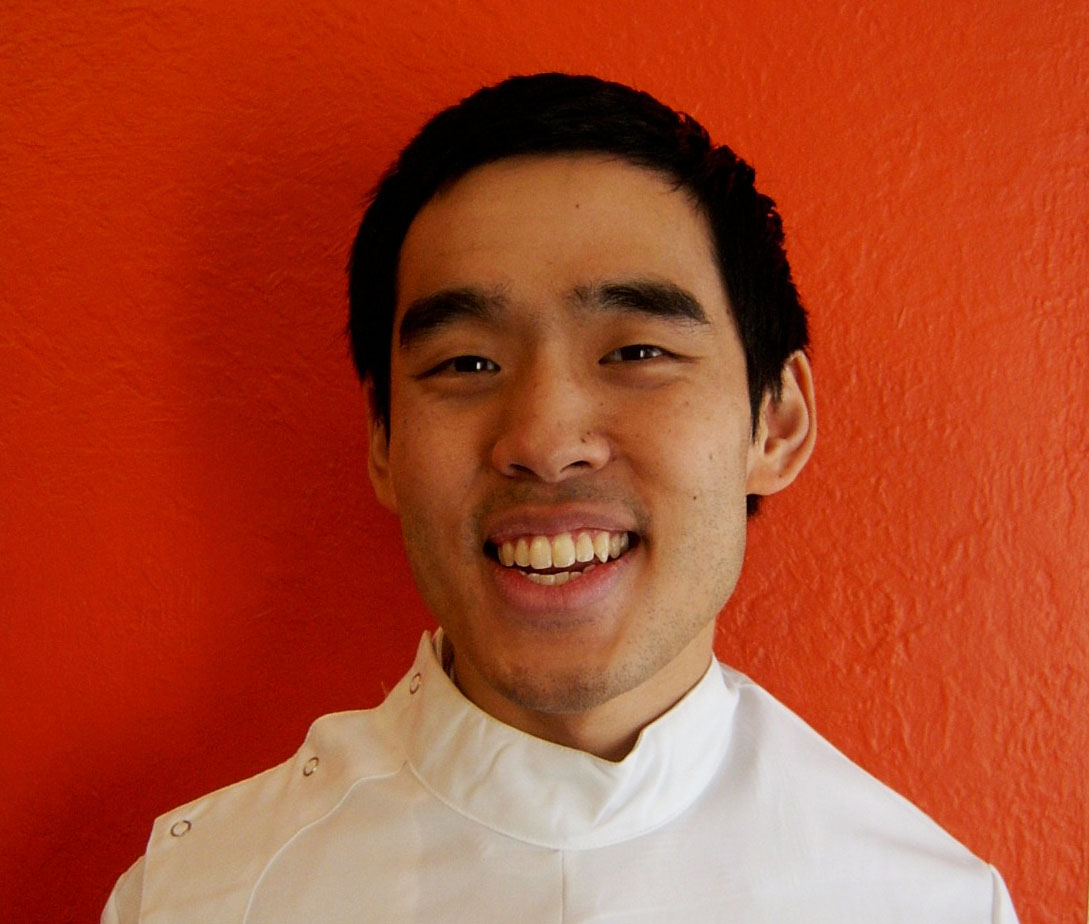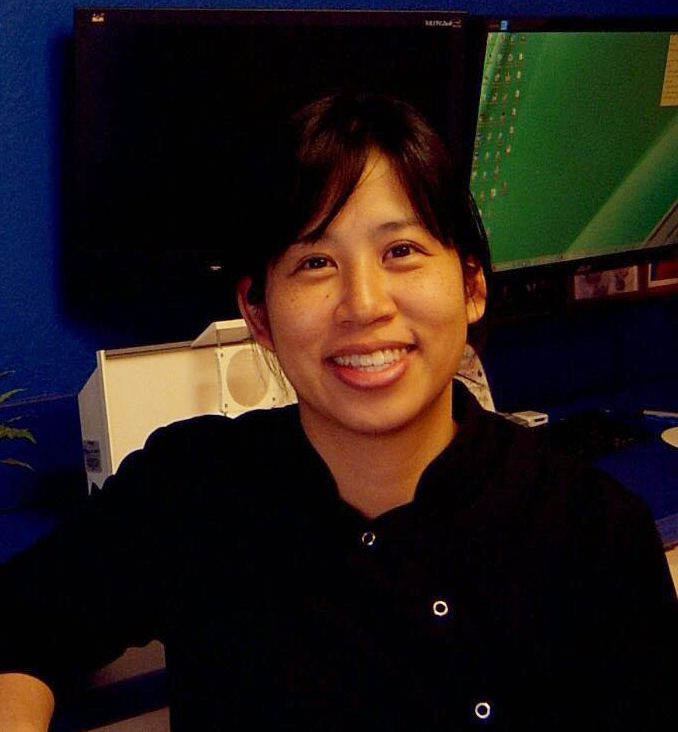


Your Family Dentists @ Moorabbin, located at 462 South Rd, Moorabbin offer quality dental care from experienced dentists. Covering the Melbourne South Eastern suburbs, dentists Dr. Sam Lim, Dr. Judy Wu, Dr. Ryan Chan and Dr. Phuong Tran provide dental care for your whole family.
Family Dentists at Moorabbin facilitates general dental procedures. This includes :
- Oral Examinations
- Scale & Clean - Removal of Plaque and Calculus
- Radiographs
- Root Canal Treatments
- Teeth Extractions
- Mouth Guards and Night Guards
- Bleaching of Teeth - In Chair and Take Home
- Crowns and more.
From children to adults, Family Dentists Moorabbin are able to offer practical and reasonable care of your oral health, to get you smiling again.
You're never fully dressed without a smile!
Online AppointmentsWelcome to Family Dentists at Moorabbin
Our Services
Employment
Oral Hygiene Instructions
Every time you visit the dentist for a checkup, there’s one question you’re almost certain to hear: “Have you been flossing regularly?” For a lot of patients, the answer isn’t always yes. Many people make a point of brushing their teeth twice a day, as the American Dental Association (ADA) recommends, but fewer people follow the recommendation to floss at least once a day
What many of these non-flossers don’t realize is that this step plays an important role in dental health. Unlike a toothbrush, which cleans the tops and outer surfaces of the teeth and gums, floss is an interdental cleaner– it’s designed specifically to clean the tight spaces between the teeth and the gap between the base of the teeth and the gums. These are places that a toothbrush can’t reach. And while antimicrobial mouthwash can kill the bacteria that form plaque, it can’t remove the stubborn tartar and bits of food that can lodge in these places.
The tiny gaps between teeth that a toothbrush cant reach make a perfect hiding place for food particles and bacteria.
If theyre allowed to remain there for a long time, these bacteria can start to destroy gum tissue as well as the bones and ligaments that support teeth. Flossing removes bacteria and food particles from between teeth.
If youve never tried it before flossing can be a bit fiddly and, when you first start out, it can make your gums bleed a little but this will lessen or stop over time.
Floss is available in many different sizes, coatings and flavours. You can experiment with different ones to find a favourite. If you have trouble using the floss wrapped around your fingers, you can buy floss holders in most supermarkets and pharmacies.
How to Floss
-
Take about 30cm of dental floss and wrap one end around each of your middle fingers.
-
Using your thumbs and index fingers as guides, gently slide the floss between two teeth, using a saw-like motion.
-
Once at the gum line, wrap the floss to form a C shape against one of the two teeth. Slide it up and down against that tooth. Be careful not to snap the floss between teeth.
-
Next, wrap the floss against the other tooth and repeat the up-down motion.
-
Be very gentle and try not to scrape the floss too hard against your gums.
-
Repeat this wherever two teeth are touching.
Whitening
TRAY WHITENING
Q What does tooth whitening do?
A Tooth whitening can be a highly effective, yet very simple way, of lightening the colour of teeth without removing any of the tooth surface. It cannot make a colour change, but lightens the existing colour.
Q What does the procedure involve?
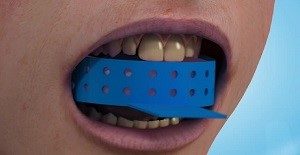
A In a live tooth the dentist applies the whitening product using a specially made tray which fits into the mouth like a gum shield. The chemical is then activated using heat, or heat and light combined. The active ingredient in the product is normally hydrogen peroxide or carbamide peroxide.
If the tooth has been root treated, the canal, which previously contained the nerve, may be reopened and the whitening product is put in.
In both cases, the procedure needs to be repeated until the right shade is reached.
Q How long does the procedure take?
AFirst of all you will need 2 or 3 visits to your dentist. Your dentist will need to make a mouthguard and will need to take impressions for this at the first appointment. Once your dentist has started the
treatment, you will have to continue the treatment at home. This will mean applying the bleach regularly over 2-4 weeks for 30 minutes to 1 hour at a time.
However, some newer products can be applied for up to 8 hours at a time, which means that a satisfactory result can be obtained in as little as 1 week.
Q Why would my teeth need to be bleached?
AEveryone is different; and just as our hair and skin colour varies, so do our teeth. Some teeth have a yellowish tinge, some are more beige – very few are actually ‘white’. Teeth also yellow with age can become stained on the surface by food and drinks such as tea, coffee and blackcurrant. Calculus (tartar) can also affect the colour of the teeth. Some people may have staining inside their teeth. This can be caused by certain antibiotics or tiny cracks in the teeth, which take up the stain.
Q Will I be happy with the results?
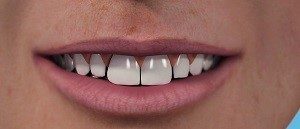
ATreatment results may vary depending on the original shade of the teeth. Teeth will tend to darken slightly over time. The effect lasts for around 1 to 3 years, although sometimes it can last longer. Some people find that their teeth are sensitive for the first few days after treatment, but this wears off after a short while.
Q What about home kits?
A Over-the-counter kits are not recommended as they contain only a small amount of hydrogen peroxide which makes the product less effective. Some also contain mild acids, while others are abrasive. Although these products are cheaper, whitening is a complicated treatment procedure and should only be carried out by a dentist after a thorough examination and assessment of your teeth. It is very important to follow the instructions your dentist gives you, and to make sure that you go for any follow-up appointments recommended.
Q When might whitening not work?
A Whitening can only lighten your existing tooth colour. For a change to specific chosen shade veneering is another option. Whitening also works on natural teeth. It will not work on any type of ‘false’ teeth. This includes dentures, crowns and veneers. If dentures are stained or discoloured, it may be worth visiting the dentist and asking him or her to clean them. Stained veneers, crowns and dentures may need replacing. Again, ask your dentist.
Q What about whitening toothpaste?
A There are now several whitening toothpastes you can buy. Although they do not affect the natural colour of the tooth, they are effective at removing staining and therefore improving the overall appearance of the tooth. Whitening toothpaste may also help to keep up the appearance, once teeth have been professionally whitened.
Minor oral surgery
EXTRACTION
Q I’ve had my tooth out… what should I do now?
A Take it easy for the rest of the day. Take as little exercise as you can, and rest as much as you can. Keep your head up to avoid any bleeding.
Q What precautions should I take?
AAvoid hot food or drinks until the anaesthetic wears off. This is important as you cannot feel pain properly and may burn or scald your mouth. Also be careful not to chew your cheek. This is quite a common problem, which can happen when there is no feeling.
If you do rest, try to keep your head higher for the first night using an extra pillow if possible. It is also a good idea to use an old pillowcase, or put a towel on the pillow, in case you bleed a little.
Q Should I rinse my mouth out?
ADo not be tempted to rinse the area for the first 24 hours. It is important to allow the socket to heal, and you must be careful not to damage the blood clot by eating on that side or letting your tongue disturb it. This can allow infection into the socket and affect healing.
Q Is there anything else I should avoid?
A Avoid alcohol for at least 24 hours, as this can encourage bleeding and delay healing. Eat and drink lukewarm food as normal but avoid chewing on that area of your mouth.
Q When should I brush?
AIt is just as important, if not more so, to keep your mouth clean after an extraction. However, you do need to be careful around the extraction site.
Q What do I do if it bleeds?
A The first thing to remember is that there may be some slight bleeding for the first day or so. Many people are concerned about the amount of bleeding. This is due to the fact that a small amount of blood is mixed with a larger amount of saliva, which looks more dramatic than it is.
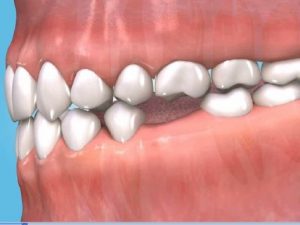
If you do notice bleeding, do not rinse out, but apply pressure to the socket. Bite firmly on a folded piece of clean cotton material such as a handkerchief for at least 15 minutes. Make sure this is placed directly over the extraction site and that the pad is replaced if necessary.
If the bleeding has not stopped after an hour or two, contact your dentist.
Q How soon can I have a cigarette?
A It is important not to do anything which will increase your blood pressure, as this can lead to further bleeding. We recommend that you avoid smoking for as long as you can after an extraction, but this should be at least for the rest of the day.
Q Is there anything I can do to help my mouth?
ADifferent people heal at different speeds after an extraction. It is important to keep your mouth and the extraction site as clean as possible, making sure that the socket is kept clear of all food and debris. Don’t rinse for the first 24 hours, and this will help your mouth to start healing. After this time use a salt-water mouthwash, which helps to heal the socket. A teaspoon of salt in a glass of warm water gently rinsed around the socket twice a day can help to clean and heal the area. Keep this up for at least a week or for as long as your dentist tells you.
It is important to keep to a healthy diet; and take a Vitamin C supplement, which will help your mouth to heal.
Q I am in pain, what should I take?

A There will usually be some tenderness in the area for the first few days, and in most cases some simple pain relief is enough to ease the discomfort. What you would normally take for a headache should be enough. However, always follow the manufacturer’s instructions and if in doubt check with your doctor first. Do not take aspirin, as this will make your mouth bleed.
Q Are there any medicines I should avoid?
AAs we have said, it is important not to use anything containing aspirin as this can cause further bleeding. This happens because aspirin can thin the blood slightly. Asthma sufferers should avoid Ibuprofen-based pain relief. Again check with your chemist or dentist if you are worried or feel you need something stronger.
Q I am still in pain, what could it be?
ASometimes an infection can get in the socket, which can be very
painful. This is where there is little or no blood clot in the tooth socket and the bony socket walls are exposed and become infected. This is called a dry socket and in some cases is worse than the original toothache! In this case, it
is important to see your dentist, who may place a dressing in the
socket and prescribe a course of antibiotics to help relieve the infection. You may also feel the sharp edge of the socket with your tongue and sometimes small pieces of bone may work their way to the surface of the socket. This is perfectly normal.
Q Will my dentist need to see me again?
A If it has been a particularly difficult extraction, the dentist will give you a follow-up appointment. This could be to remove any stitches that were needed, or simply to check the area is healing well.
Your dentist will also want to discuss the options available to you for replacing your lost tooth.
Root Canals
ROOT CANAL TREATMENT
Q What is root canal treatment?
ARoot canal treatment (also called endodontics) is needed when the blood or nerve supply of the tooth (known as the pulp) is infected through decay or injury.
Q Why is root canal treatment needed?
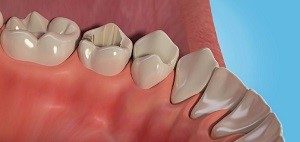
A If the pulp becomes infected, the infection may spread through the root canal system of the tooth. This may eventually lead to an abscess.
If root canal treatment (RCT) is not carried out, the infection will spread and the tooth may need to be taken out.
Q Does it hurt?
A A local anaesthetic is used and it should feel no different to having an ordinary filling done.
Q What does it involve?
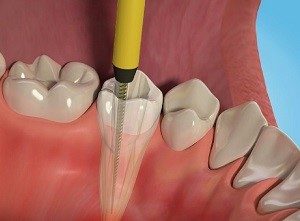
A The aim of the treatment is to remove all infection from the root canal. The root is then cleaned and filled to prevent any further infection.
Root canal treatment is a skilled and time-consuming procedure. Most courses of treatment will involve two or more visits to your dentist.
At the first appointment, the infected pulp is removed. Any abscesses, which may be present, can also be drained at this time. The root canal is then cleaned and shaped ready for the filling. A temporary filling is put in and the tooth is left to settle.
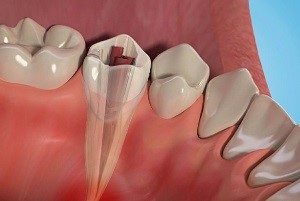
The tooth is checked at a later visit and when all the infection has cleared, the tooth is permanently filled.
Q What will my tooth look like after treatment?
A In the past, a root filled tooth would often darken after treatment. However, with modern techniques this does not usually happen. If there is any discolouration, there are several treatments available to restore the natural appearance.
Root canal treatment is usually very successful. However, if the infection comes back the treatment can be repeated.
Q What if I don’t have the treatment?
A The alternative is to have the tooth out. Once the pulp is destroyed, it can’t heal and it is not recommended to leave an infected tooth in the mouth.
Although some people would prefer an extraction, it is usually best to keep as many natural teeth as possible.
Q Will the tooth be safe after treatment?
A Yes. However, it is better to restore the tooth with a crown to provide extra support and strength to the tooth.
Q Where can this treatment be carried out?
A Root canal treatment is a routine dental procedure, which your dentist will be happy to do for you.
Q What about aftercare?
ARoot-treated teeth should be treated just the same as any other tooth. Remember to clean your teeth at least once a day, preferably with a fluoride toothpaste. Cut down on sugary snacks, and keep them only to mealtimes if possible. See your dentist for regular check-ups.
Emergency Care

Emergency is our priority.
We will endeavour to see all Emergency patients within 24 hours
Kids Dentist
Your Child’s first visit
Today, most children have no fear of attending a dental surgery. Young children observe their parents and older brothers or sisters accepting oral care as an integral part of life. However, occasionally children do show signs of fear the first time their teeth are checked. Often, this fear is caused by a friend or a relative frightening the child either intentionally or unintentionally, or as a joke.
Dental staff are specially trained to assist children to accept oral care with confidence. Visiting your family dentist from an early age will develop a positive attitude towards oral health care.
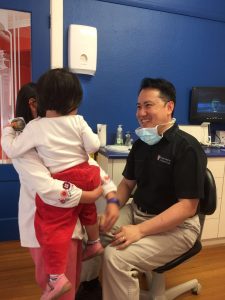
Preparing your child for the First Visit
Sensible preparation of your child before the first visit is very important. Below are some simple Dos and Donts suggestions :-
- DO allow your child to visit your dentist with you. We may have time to offer your child a ride in the dental chair.
- DO talk to your child about the forthcoming visit in a positive, matter of fact way, just as you would any pleasurable new experiences.
- DO be positive about the first visit, explain to your child they will give you a ride in the dental chair and count your teeth.
- DO arrive a little before time, to allow your child to become familiar with the new surroundings, especially if they have never been here before.
- DONT make a fuss about the appointment for the child may become overly excited or anxious.
- DONT say scary things about dentists in front of your child.
- DONT say it wont hurt as it suggests that it might hurtFinally, it is recommended that if you are present, be a passive observer. Thiswill allow the dental staff the opportunity to capture the childs complete attention and assist the child to develop a sense of confidence in this situation.
Check up
Regular care is the best care! 6 monthly visits to the dentist is highly recommended for all patients to ensure a consistent monitoring of the dentition.
Why 6 months and not 9 or 12 months? It just makes it easier for patients to remember even though some patients may benefit from a more frequent visit due to their circumstances while others may not as much.

Radiographs
X-RAYS
Q Why would I need an x-ray?
A Early tooth decay does not tend to show many physical signs. Sometimes the tooth looks healthy, but your dentist will be able to see from an x-ray (radiograph) whether you have any decay under the enamel; any possible infections in the roots; or any bone loss around the tooth. X-rays can help the dentist to see in between your teeth or under the edge of your fillings. Finding and treating dental problems at an early stage can save both time and money.
In children, x-rays can be used to show where the second teeth are and when they will come through. This also applies to adults when the wisdom teeth start to come through.
Q How often should I have x-rays taken?
A If you are a new patient, unless you have had dental x-rays very recently, the dentist will probably suggest having x-rays. This helps assess the condition of your mouth and to check for any hidden problems. After that, x-rays are usually recommended every 6-24 months depending on the person, their history of decay, age and the condition of their mouth.
Q Whose property are they?
AX-rays are an essential part of your health records and must be kept with your personal dental file. As dental records work differently to normal health records, the law says your dentist must keep your dental records for at least eleven years from the date of your last course of treatment. You are entitled to copies of your records and x-rays under the Access to Health Records Act 1990. But you will have to pay for these copies. In most cases your x-rays and records will not be needed by your new dentist. However, if they are important, your dentist will let you know and either ask for your permission to send for them, or ask you to fetch them personally.
Q What will an x-ray show?
A X-rays can show decay that may not normally be seen directly in the mouth, for example: under a filling, or between teeth. They can show whether you have an infection in the root of your tooth and how severe the infection is.
In children an x-ray can show any teeth that havent come through yet, and let the dentist see whether there is enough space for the teeth to come through. In adults, it can show any impacted wisdom teeth that may need to be removed, before they cause any problems.

Q Are x-rays dangerous?
A The amount of radiation received from a dental x-ray is extremely small. We get more radiation from natural sources, including minerals in the soil and from our general environment.
With modern techniques and equipment, risks are kept to a minimum. However your dentist will always take care to use x-rays only when they need to.
Q What if I’m pregnant?
A You should always tell your dentist if you are pregnant. They will take care and will probably not use x-rays unless they really have to particularly during the first three months.
Q What types of x-rays are there?
A There are various types of x-ray. Some show one or two teeth and their roots while others can take pictures of several teeth at once.
The most common x-rays are small ones, which are taken regularly to keep a check on the condition of the teeth and gums. These show a few teeth at a time, but include the roots and surrounding areas.
There are large x-rays that show the whole mouth, including all the teeth and the bone structure that supports the teeth. These are called panoramic x-rays.
There are also medium-sized x-rays, which show either one jaw at a time, or else one side of the face.
There are also electronic imaging systems in use today. These use electronic probes instead of x-ray films and the picture is transmitted directly onto a screen.
Q Why does the dentist leave the room?
AThe dental team might take hundreds of x-rays every week. Staff limit the amount of radiation they receive by moving away from the x-ray beam. However, the risk to patients from one or two routine x-rays is tiny.

Hours
| Monday ( Dr. Ryan Chan & Dr. Phuong Tran ) | 10:00am - 5:30pm |
| Tuesday ( Dr. Ryan Chan & Dr. Phuong Tran ) | 10:00am - 5:30pm |
| Wednesday (Dr. Sam Lim) | 10:00am - 3:00pm |
| Thursday ( Dr. Sam Lim & Dr. Ryan Chan ) | 10:00am - 5:30pm |
| Friday ( Dr. Sam Lim & Dr. Judy Wu ) | 9:30am - 5:30pm |
| Saturday | Please Call for Appointments |
Meet Our Dental Team Members
Here is text that only visible for mobile devices

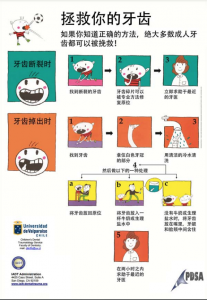 Visit
Visit 
